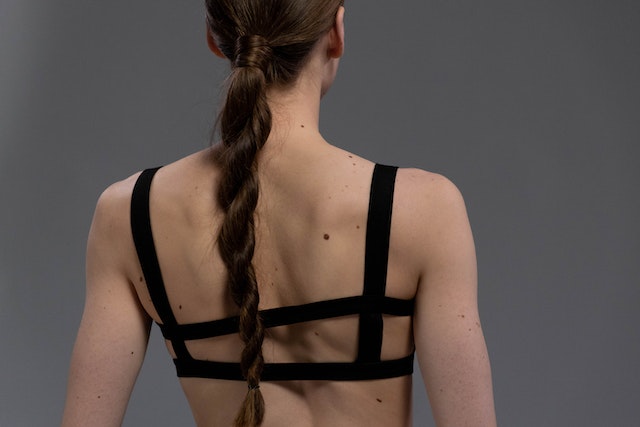
What are moles, freckles, and birthmarks? Moles are caused when pigment-producing cells grow in a group. Freckles are caused when your skin cells produce too much melanin. Birthmarks are caused when blood vessels don’t form correctly or when the cells that produce pigment grow too much.
Almost everybody has moles. By moles, I obviously don’t mean the small, furry animals that mess up gardens. The word “mole” meaning a mark on the face comes from the Old English “mal”, which meant “spot, mark, blemish”. That came from the Greek word “mianein”, which meant to “stain, defile”. The name for the animal possibly came from “moldwarp”, which meant “earth thrower”.
Our skin contains cells that make pigment, called melanin. This melanin is not only in the skin, but also in our hair, and eyes. It is what gives our hair and eyes their color. Melanin is produced in large cells called melanocytes that are all over the body. Once the melanin has been made, it can be transported around the body to where it is needed. Melanin has several purposes, but the main one is protection from UV light. UV light has more energy than regular light and can be dangerous to cells. Melanin is black, which means it can absorb the UV light, preventing it from passing straight through the other cells and causing damage to the DNA. This is why people who live in countries with more direct sunlight and more UV light have darker skin. Most people have the same number of melanocytes. We have between 1000 and 2000 in every square millimeter of skin. The only difference in skin color is that the melanocytes are more active if there is more UV light. Some people don’t have as many melanocytes, and they are known as albino.
These melanocytes might generally not be very active when there isn’t much UV light, but some areas of them can activate, producing dark melanin and making a mole on the skin. When this happens, the melanocytes grow in a cluster by chance. Because there are more melanocytes in these areas than others, UV light is more likely to activate them and they produce melanin, making a mole. They are usually harmless.
Freckles are caused in almost the same way as moles. Some parts of the skin has more melanocytes than other parts and they produce more melanin. These freckles are usually not visible, but they become darker in the summer, or when the person is exposed to more UV light. Freckles are more common in people with very light skin. They are often thought to be in the face, but freckles can be all over the body. The reason we think of them on the face is because the face is the most exposed part of the body and receives more sunlight and UV light than any other part of the body.
Birthmarks can be formed in two different ways. The first way are pigmented birthmarks. They are formed in the same way as moles and freckles. Some parts of the skin have more melanocytes and produce more melanin, coloring the skin. They are not dangerous, but can be embarrassing.
The second type of birthmarks are caused by blood vessels that don’t grow properly. They are quite often called port wine stains because they look like a wine stain on the skin. They are caused when the blood vessels under the skin don’t grow properly and become swollen, putting more blood close to the skin. These grow with the person and the mark becomes darker and more purple as they age.
Moles, freckles, and birthmarks can all be treated in a number of different ways. Surgery is obviously possible, but not many people want to undergo surgery. One of the most common methods is laser treatment. This is also a way of removing tattoos as well. Melanin particles are too large for the skin to absorb and for the liver to remove from the body. A laser can be targeted at the correct wavelength to heat the melanin very quickly and cause it to explode into smaller particles. The body can then absorb and remove these particles. Vascular birthmarks can also be treated by lasers because the laser can destroy the blood vessels without harming the skin around them. A laser might not be able to remove the whole birthmark, but it could do enough to fade it. And this is what I learned today.
Photo by cottonbro studio: https://www.pexels.com/photo/close-up-shot-of-a-woman-s-back-6800682/
Sources
https://www.etymonline.com/word/mole
https://www.houstonmethodist.org/blog/articles/2022/feb/when-should-i-worry-about-a-mole/
https://my.clevelandclinic.org/health/diseases/4410-moles
https://www.msdmanuals.com/en-jp/home/skin-disorders/pigment-disorders/overview-of-skin-pigment
https://www.healthline.com/health/skin/benefits-of-melanin#more-melanin
https://en.wikipedia.org/wiki/Melanocyte
https://www.mayoclinic.org/diseases-conditions/moles/symptoms-causes/syc-20375200
https://www.webmd.com/skin-problems-and-treatments/moles-freckles-skin-tags
https://my.clevelandclinic.org/health/articles/23091-freckles
https://kidshealth.org/en/parents/birthmarks.html
https://www.rileychildrens.org/health-info/pigmented-birthmark
https://www.urmc.rochester.edu/childrens-hospital/craniofacial/vascular-birthmark.aspx

Pingback: Why do tattoos stay in the skin forever? | I Learned This Today